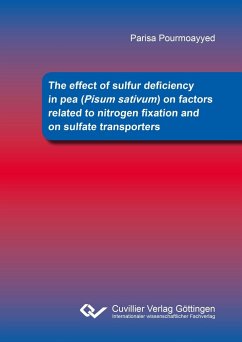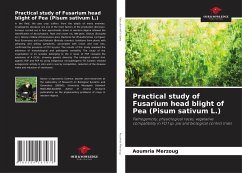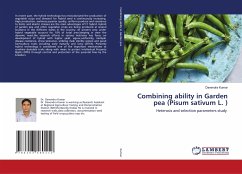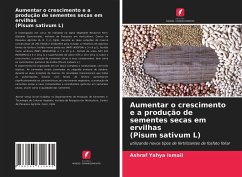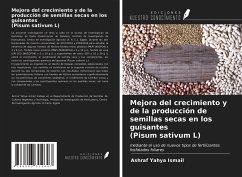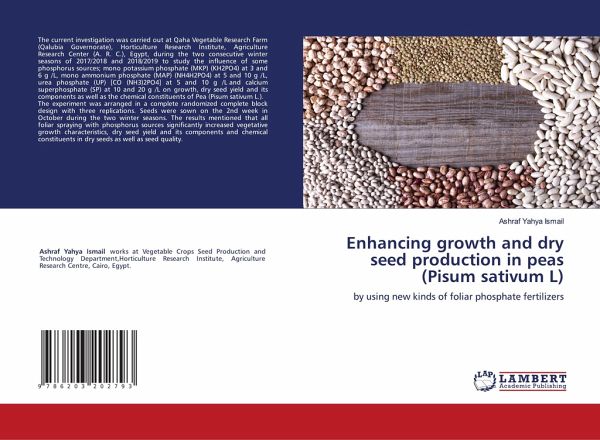
Enhancing growth and dry seed production in peas (Pisum sativum L)
by using new kinds of foliar phosphate fertilizers
Versandkostenfrei!
Versandfertig in 1-2 Wochen
26,99 €
inkl. MwSt.

PAYBACK Punkte
13 °P sammeln!
The current investigation was carried out at Qaha Vegetable Research Farm (Qalubia Governorate), Horticulture Research Institute, Agriculture Research Center (A. R. C.), Egypt, during the two consecutive winter seasons of 2017/2018 and 2018/2019 to study the influence of some phosphorus sources; mono potassium phosphate (MKP) (KH2PO4) at 3 and 6 g /L, mono ammonium phosphate (MAP) (NH4H2PO4) at 5 and 10 g /L, urea phosphate (UP) [CO (NH3)2PO4] at 5 and 10 g /L and calcium superphosphate (SP) at 10 and 20 g /L on growth, dry seed yield and its components as well as the chemical constituents of ...
The current investigation was carried out at Qaha Vegetable Research Farm (Qalubia Governorate), Horticulture Research Institute, Agriculture Research Center (A. R. C.), Egypt, during the two consecutive winter seasons of 2017/2018 and 2018/2019 to study the influence of some phosphorus sources; mono potassium phosphate (MKP) (KH2PO4) at 3 and 6 g /L, mono ammonium phosphate (MAP) (NH4H2PO4) at 5 and 10 g /L, urea phosphate (UP) [CO (NH3)2PO4] at 5 and 10 g /L and calcium superphosphate (SP) at 10 and 20 g /L on growth, dry seed yield and its components as well as the chemical constituents of Pea (Pisum sativum L.). The experiment was arranged in a complete randomized complete block design with three replications. Seeds were sown on the 2nd week in October during the two winter seasons. The results mentioned that all foliar spraying with phosphorus sources significantly increased vegetative growth characteristics, dry seed yield and its components and chemical constituents in dry seeds as well as seed quality.








